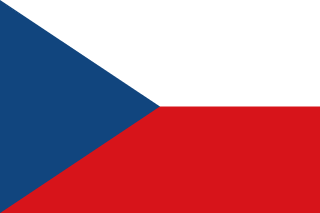The Czech Republic, although located in Central Europe and without direct access to the sea, has a rich maritime history thanks to its waterways and importance in inland transport. This country is crossed by several rivers, notably the Vltava and the Elbe, which play a crucial role in trade and inland navigation. Inland navigation is well developed, contributing to the transport of goods and river tourism. Despite the absence of a direct maritime coastline, the Czech Republic maintains maritime relations through its neighboring ports and uses its waterways to strengthen its international trade.

Explore the strategic ports and maritime infrastructure of czech_republic

Essential maritime information about Rudna Port port for sea professionals

Essential maritime information about Brno Port port for sea professionals

Essential maritime information about Prague Port port for sea professionals
Explore the strategic ports and maritime infrastructure of czech republic
The Czech Republic is a landlocked country located in Central Europe, without direct access to the sea. Due to its geographical position, it does not have a maritime coastline, which means traditional ocean maritime transport is not possible from its territory. However, the Czech Republic makes extensive use of its waterways for transport and trade. Major rivers such as the Vltava and the Elbe provide important links to seaports located in neighboring countries like Germany, notably the port of Hamburg on the North Sea. These waterways enable the country to actively participate in maritime trade through indirect means and facilitate the movement of goods to and from international destinations.
The inland water transport infrastructure is well developed with a network of canals, modernized river ports, and freight terminals. These infrastructures are crucial for the country's economic development as they facilitate multimodal transfer between river users and European seaports, thus ensuring a continuous flow of goods essential to the Czech economy.
Despite lacking a maritime coast, the Czech Republic benefits from significant indirect maritime activity thanks to its navigable rivers. Inland transport plays a central role in the movement of heavy goods, including construction materials, agricultural products, industrial materials, and manufactured goods. These activities help reduce logistical costs and lower the carbon footprint compared to road and rail transport, aligning with a sustainable transport development strategy.
Furthermore, river tourism is also growing, with many cruises and water activities organized on the Vltava, especially in Prague, where the river flows through the historic center. This activity generates significant income in the tourism sector and contributes to the enhancement of the natural and cultural heritage associated with waterways. Finally, the Czech Republic maintains economic partnerships with neighboring maritime countries, facilitating the transit of goods and the development of international maritime exchanges, thereby strengthening its position in the European logistics chain.